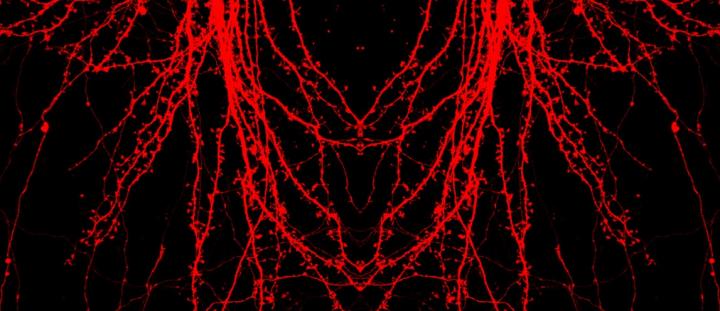Scientists examined a novel approach to analyzing the dendritic spine shapes and suggest considering the clusterization approach.

Credit: Peter the Great St.Petersburg Polytechnic University
Dendritic spines are small protrusions from a neuron’s dendrite membrane, where contact with neighboring axons is formed to receive synaptic input. These spines have different sizes, shapes, and density. Changes in the characteristics of the dendritic spines are associated with learning and memory and could be a feature of neurodegenerative disorders like Alzheimer’s disease and Huntington’s disease. Due to the prominent importance of synaptic contacts, researchers put efforts into reliable visualization and analysis of the dendritic spines. Latter requires dividing them into groups based on the key morphological parameters.
Scientists from Peter the Great St.Petersburg Polytechnic University (SPbPU) in collaboration with UT Southwestern Medical Center at Dallas, TX, examined a novel approach to analyzing the dendritic spine shapes. Unlike the standard approach of dividing them into three or four predefined subclasses, they suggest considering the clusterization approach. The perspective and potential limitations of using a clusterization approach were published in the journal Frontiers in Synaptic Neuroscience.
Methods for analyzing and understanding the morphology of dendritic spines are critically important for many fields of neuroscience. Between axonal bouton and spines, there is a contact zone for transmission of information from one neuron to another. Despite the fact that neurons and dendrites are rather stable structures, the synaptic spines are very plastic and prone to changes.
“Dendritic spines are quite separate structures living on their own terms. They could change in response to neuronal activity. The strength and number of synaptic connections are correlated with learning and memory. Decreasing in quality or number of synaptic contacts could be a diagnostic feature of early-stage pathological processes. The first symptoms of neurodegeneration could appear much later because our brain has a certain margin of safety”, – said Ekaterina Pchitskaya, postdoctoral fellow of Laboratory of molecular neurodegeneration at SPbPU.
Scientists studied relationships between dendritic spines shape, density, and functions. Previous studies mostly rely on the classification approach. It suggests that spines are divided into fixed categories such as thin, mushroom, and stubby. Mushroom spines have a large head and a small neck, separating them from a dendrite. They form strong synaptic connections, have a long lifetime, and thought to be connected with long-term memory. Thin spines have a similar structure, but their head is smaller relative to the neck. Researchers suppose they are responsible for forming new memories. Stubby spines usually do not have a neck. They are known to be the predominant types in the early stages of postnatal development but also could be found in adults as the result of the disappearance of the mushroom spines.
“We concluded that the classification approach is quite rough and suggest to address the highly dynamic nature of spines as a continuum of different shapes. Because of this, we decided to apply algorithms that rely on clusterization. We know quite well the association between the main dendritic subclasses and their functionality. Now there is a challenge to find a link between a concrete shape and functions of the spines”, – added Ekaterina Pchitskaya.
Different types of microscopy were applied to obtain images of spines from cultured neurons, fixed brain slices, and intact brain tissue. These include two-photon, confocal, laser, and super-illumination or SIM microscopy. In previous studies, images of the dendritic spines were mainly investigated in 2D projection.
Scientists noted that research of the clusterization approach in dendritic spines’ analysis is still at the early stage but is a very perspective approach that will be further developed by scientists in near future. “The size of dendritic spines is very small and comparable to the resolution of a confocal microscope. We need to achieve high-quality 3D images to define the key morphological parameters that will allow us to collect important data on dendritic spines changes. Thus we would be able to apply different algorithms of the clusterization and compare results”, – noted Ekaterina Pchitskaya.
###
Media Contact
Raisa Bestugina
[email protected]
Related Journal Article
http://dx.




